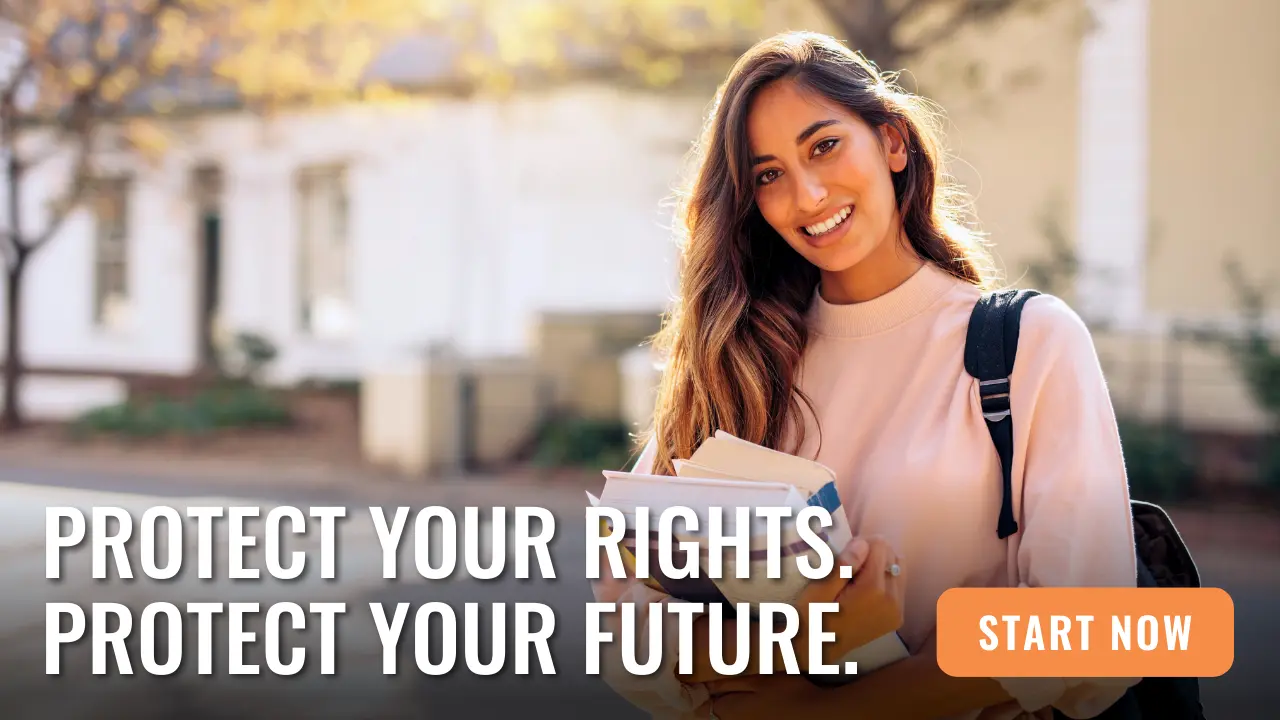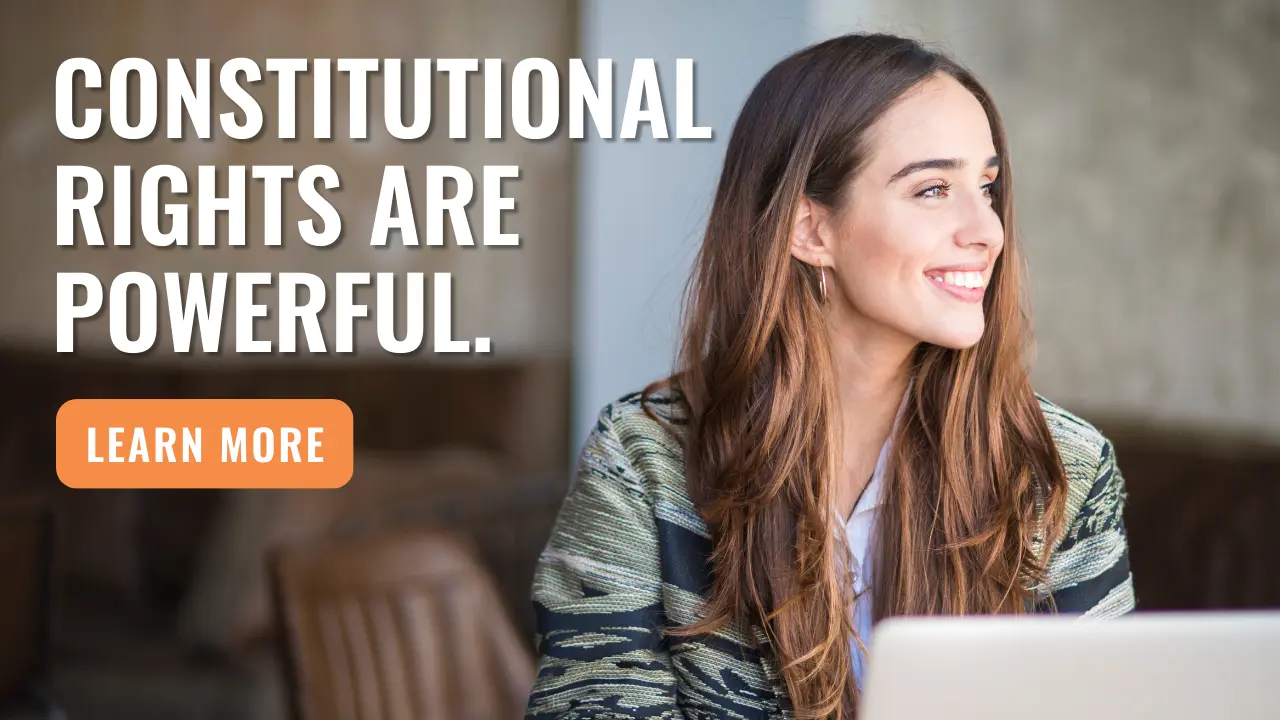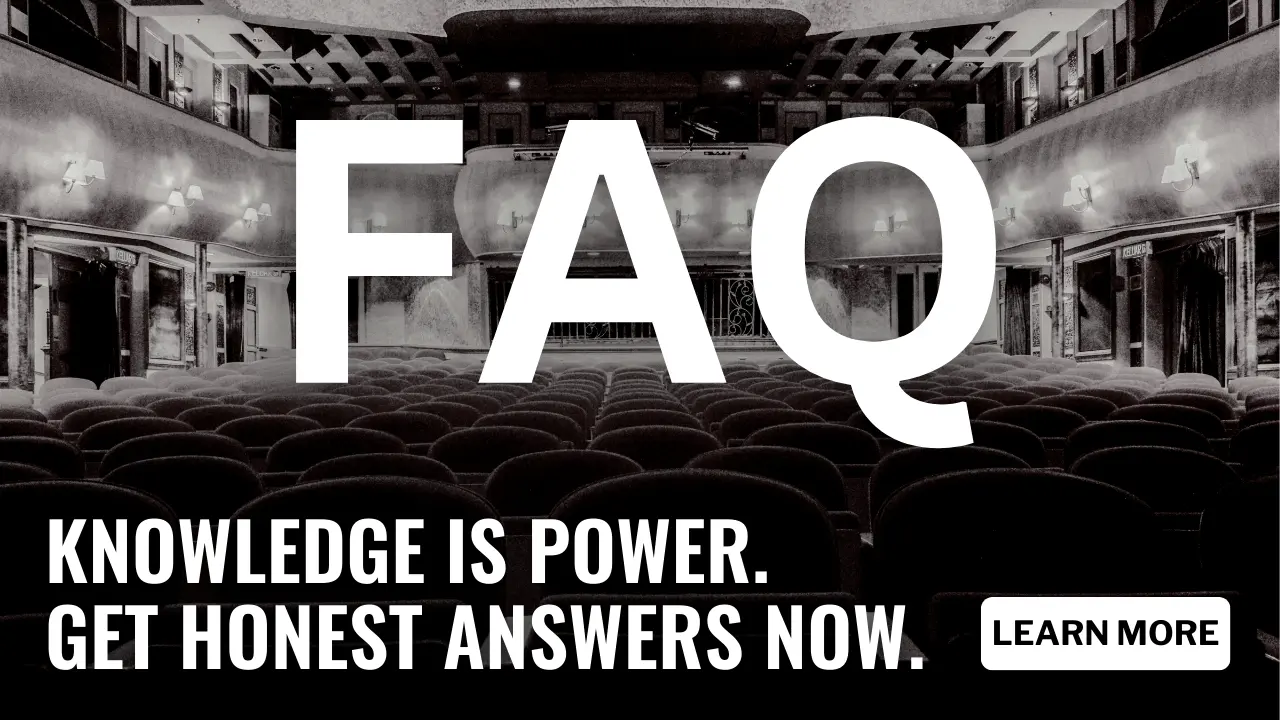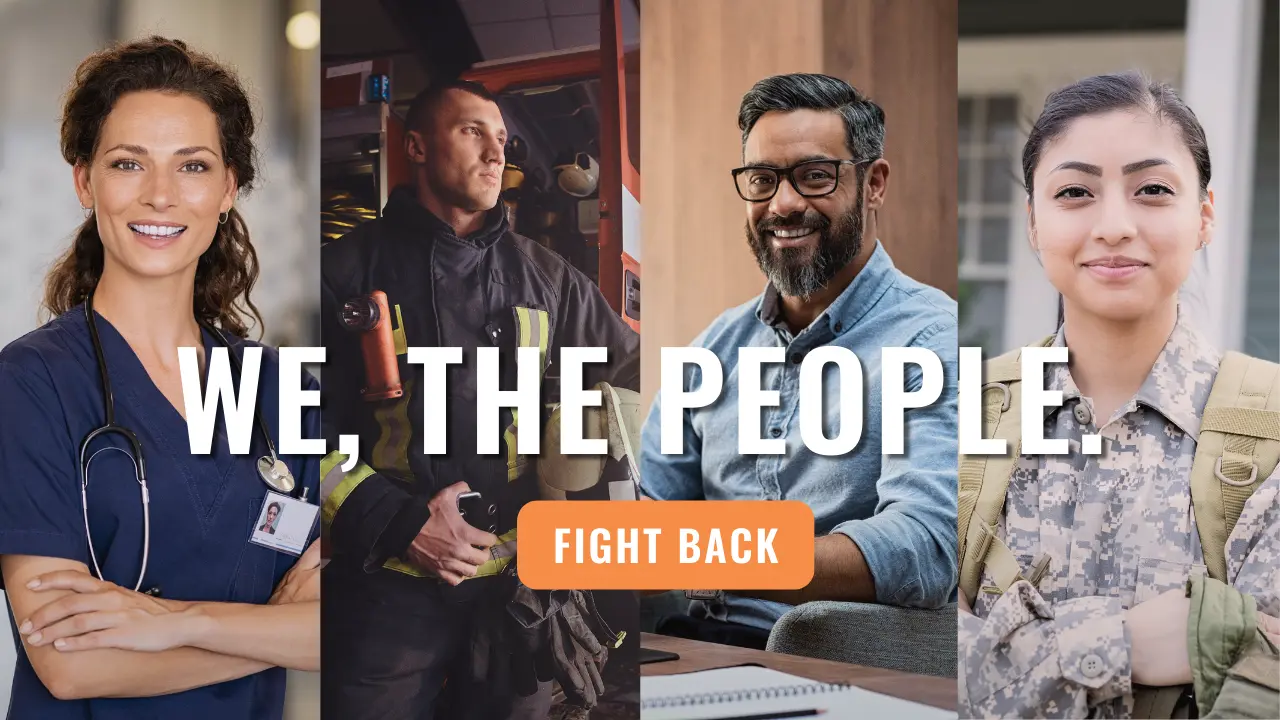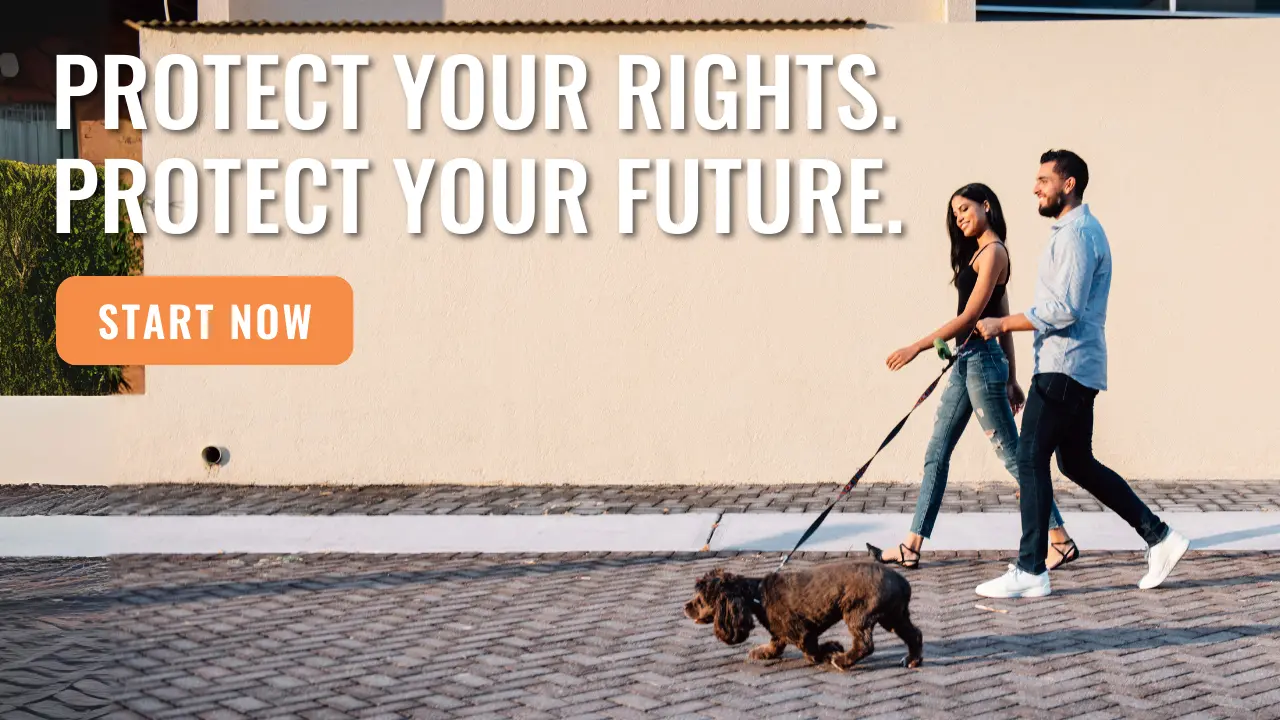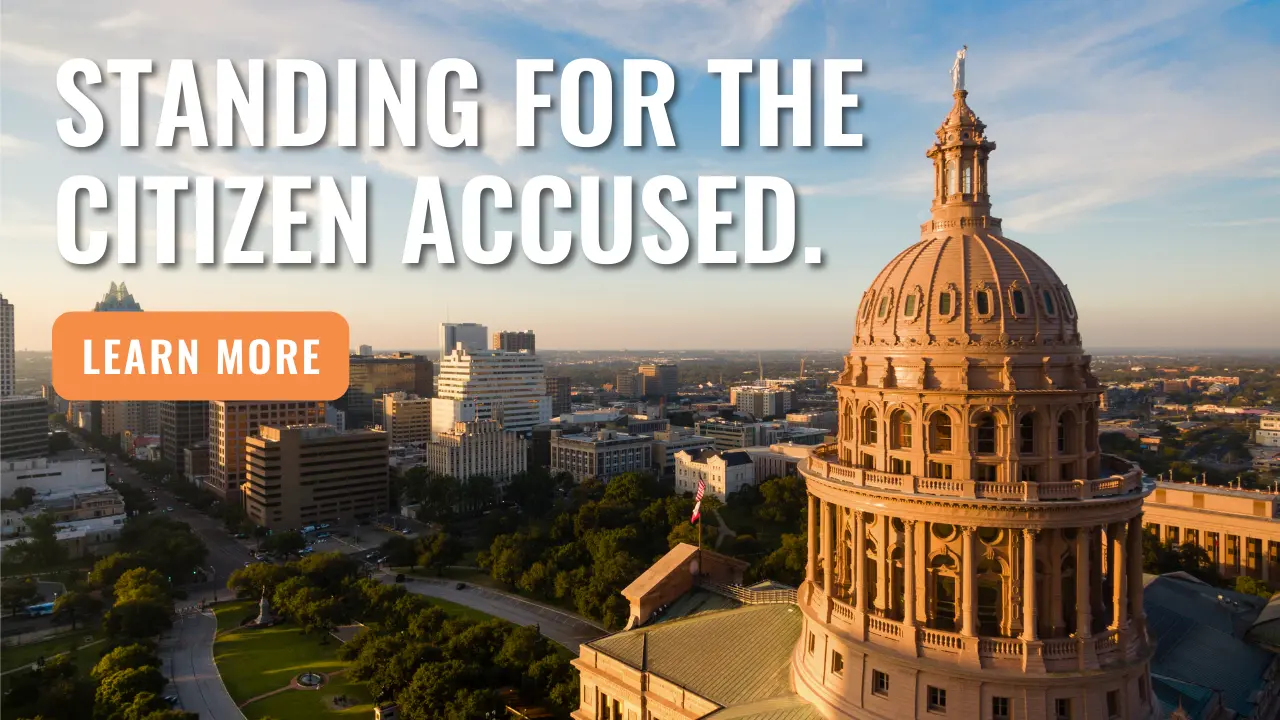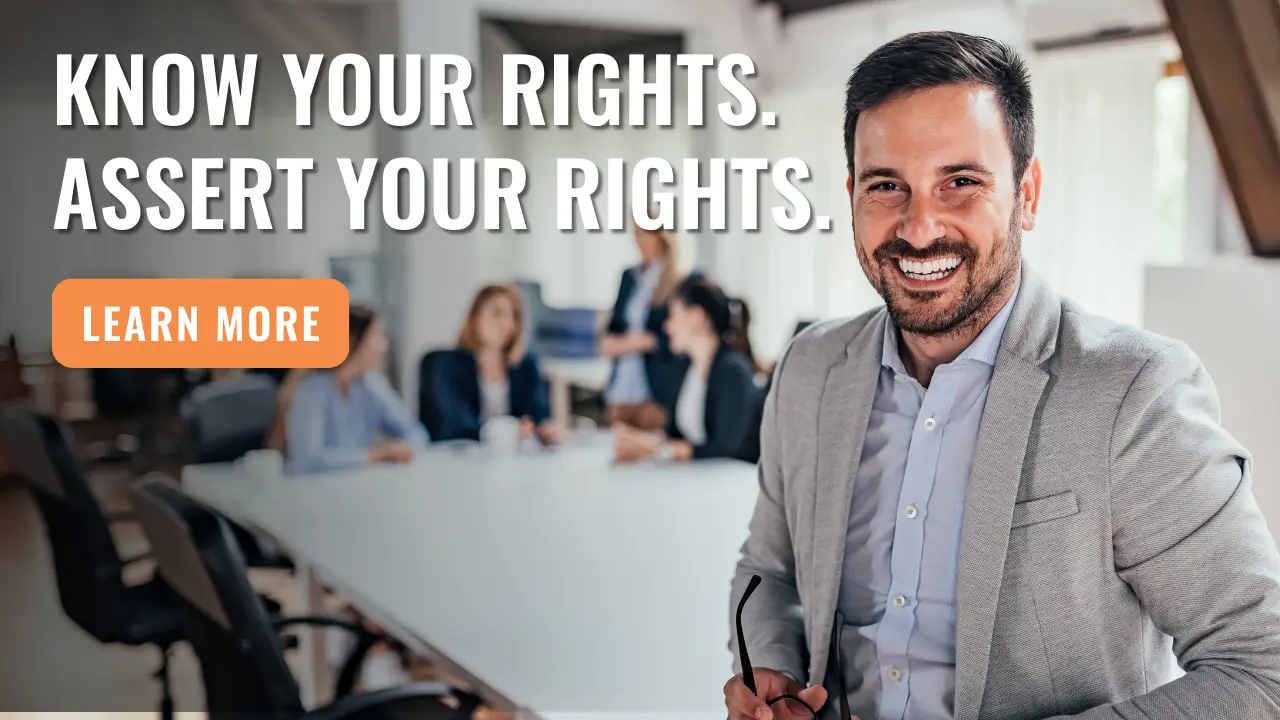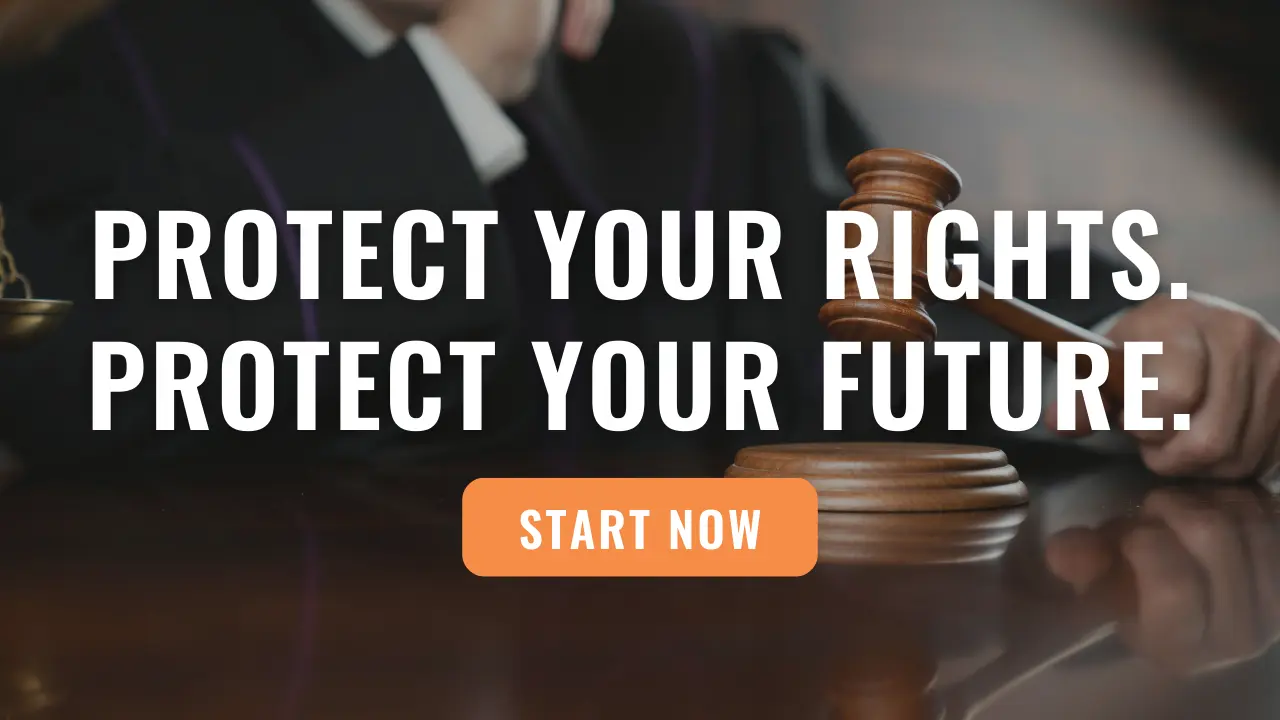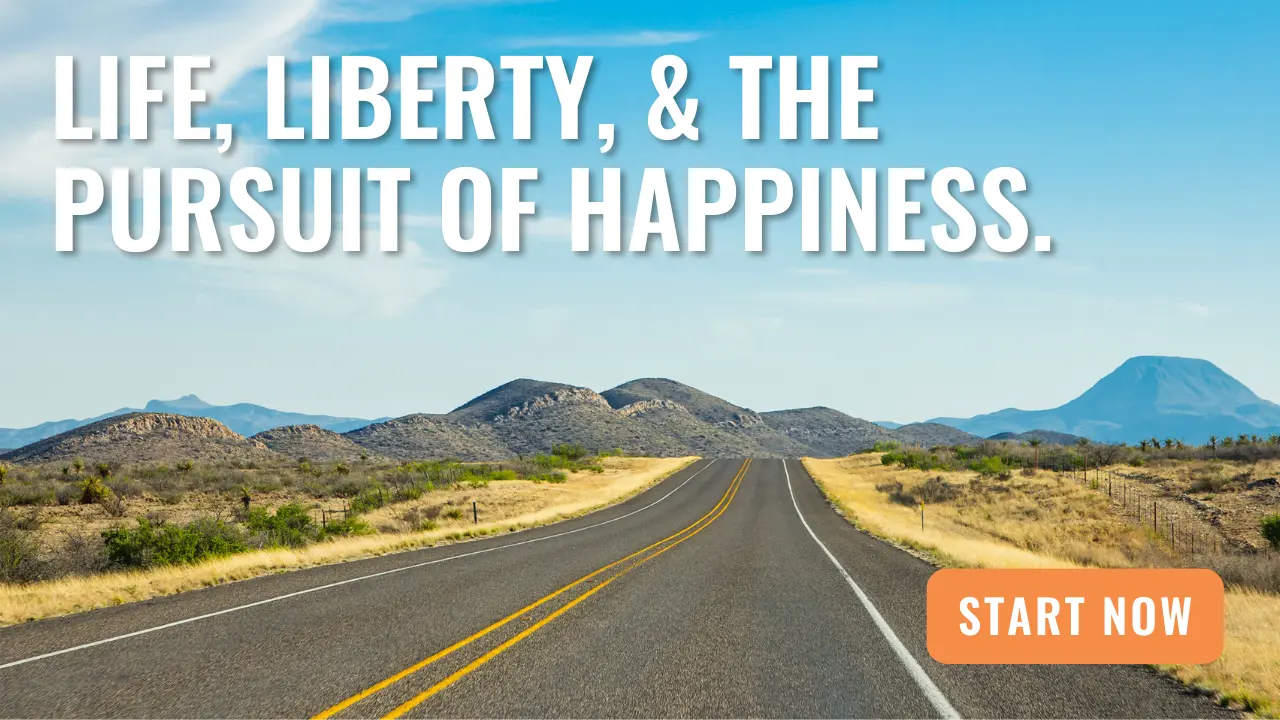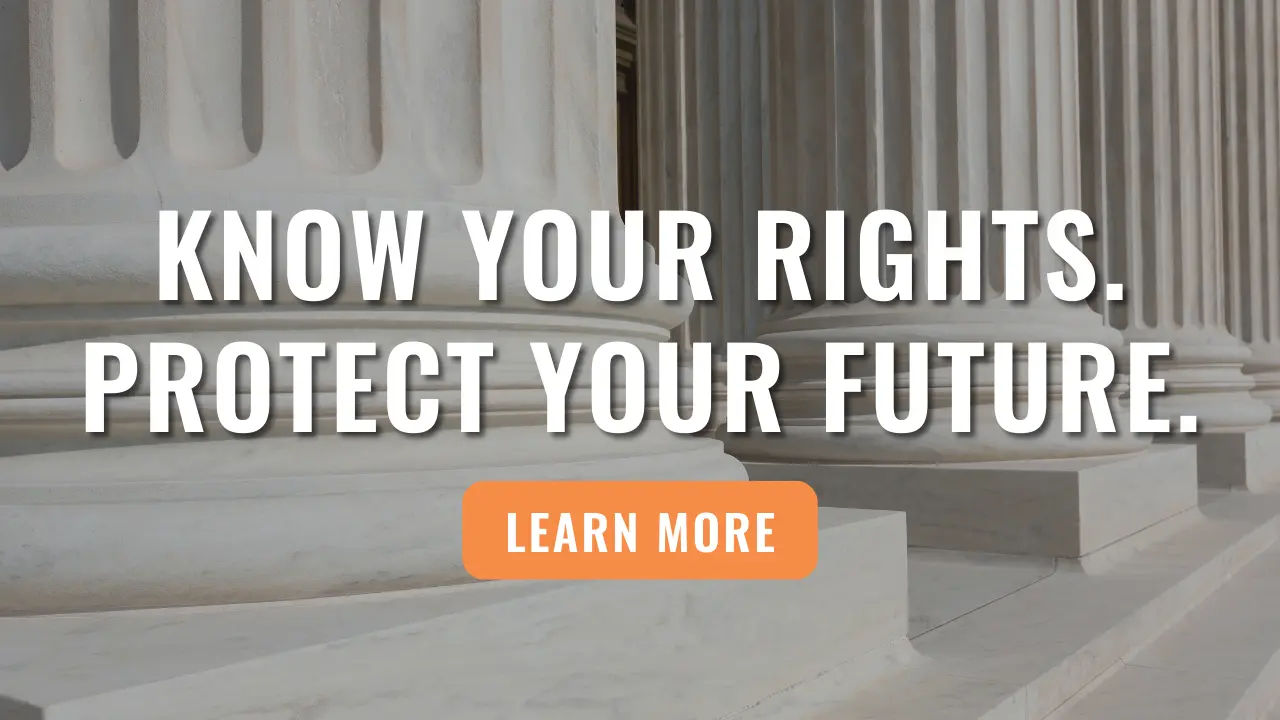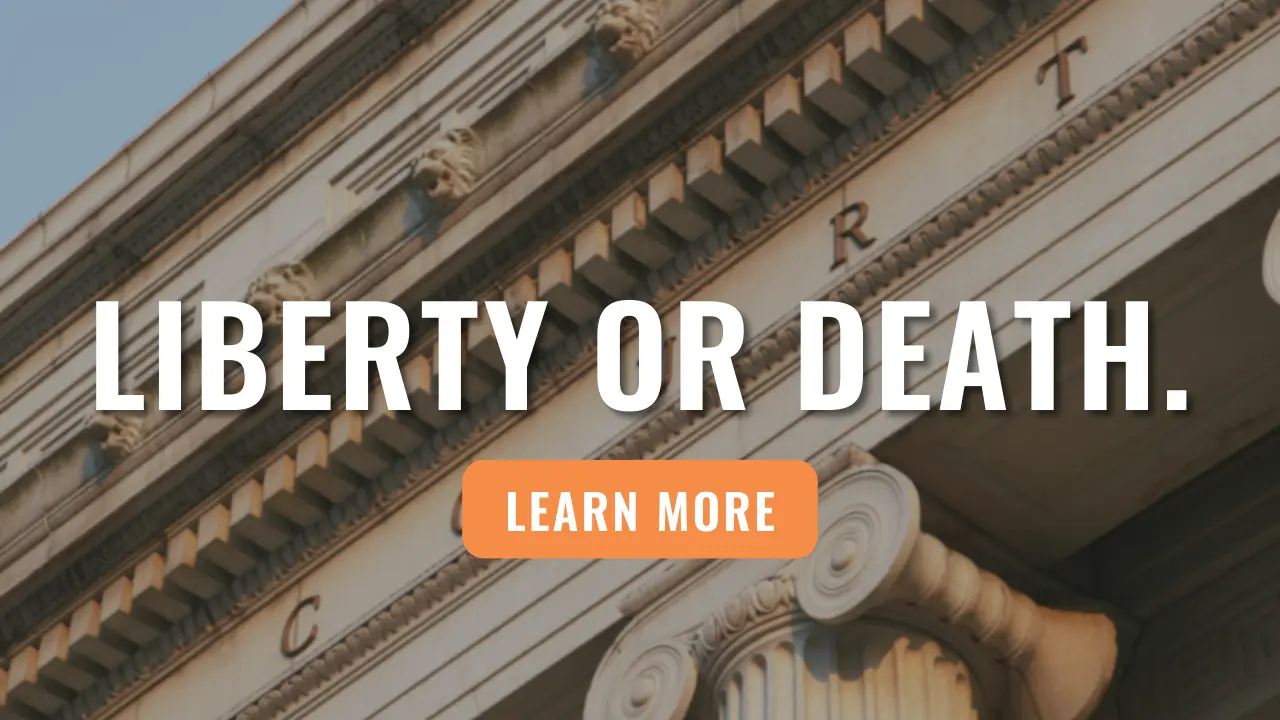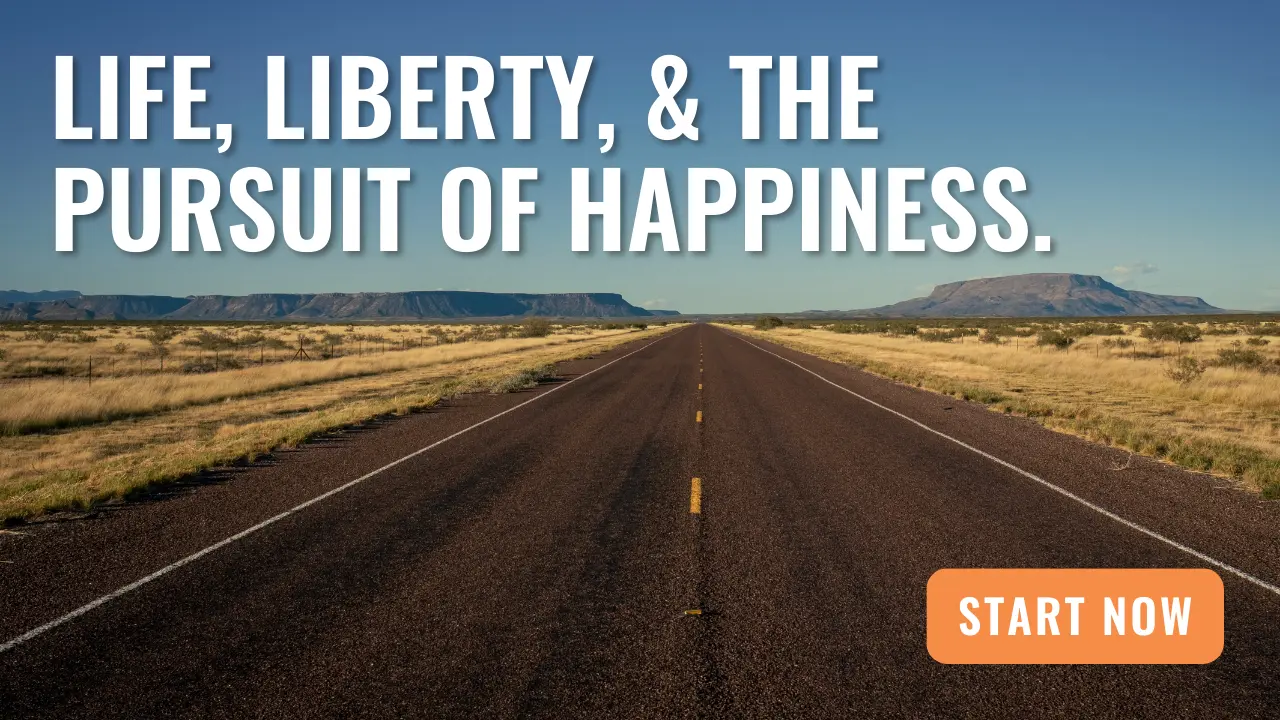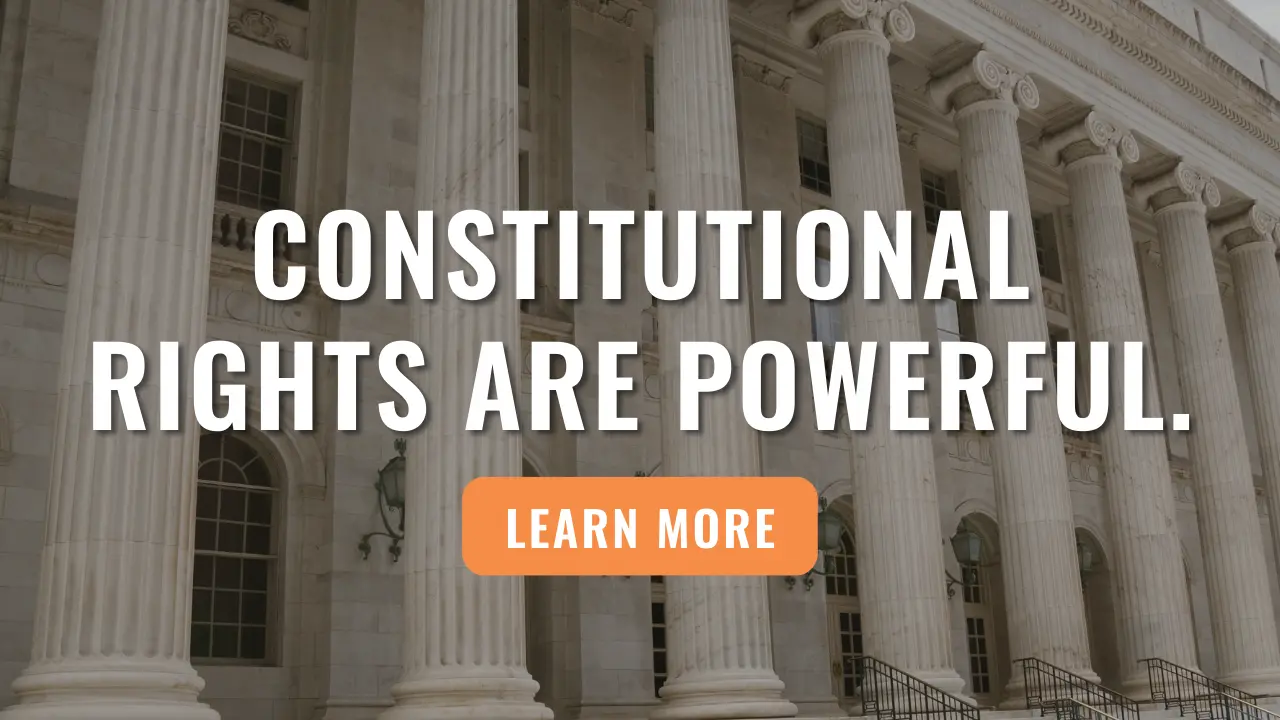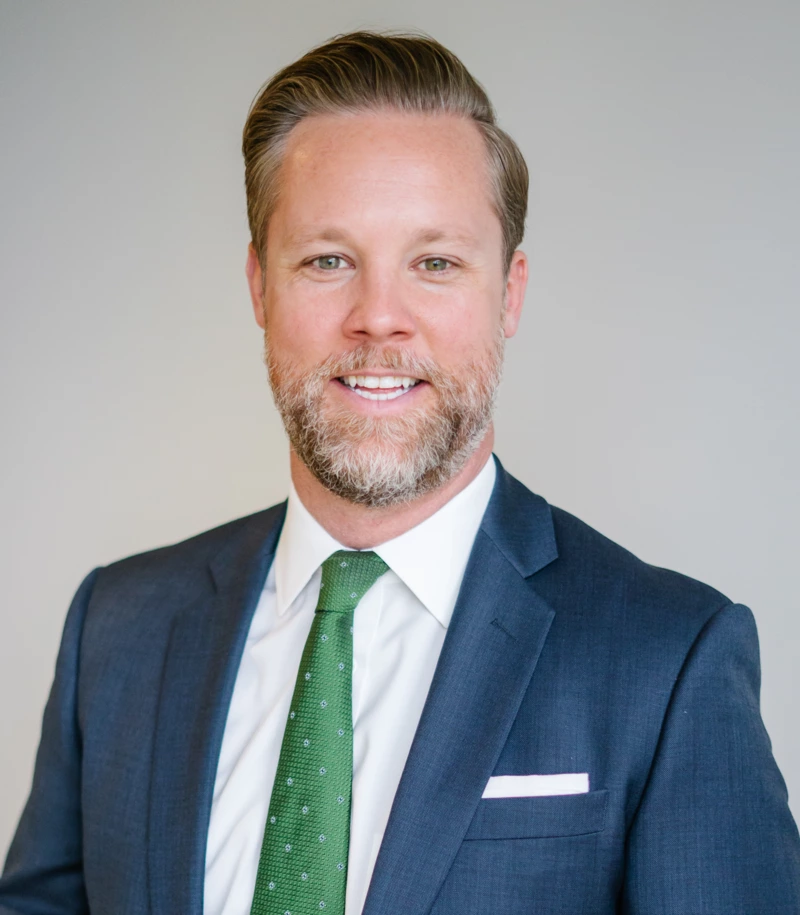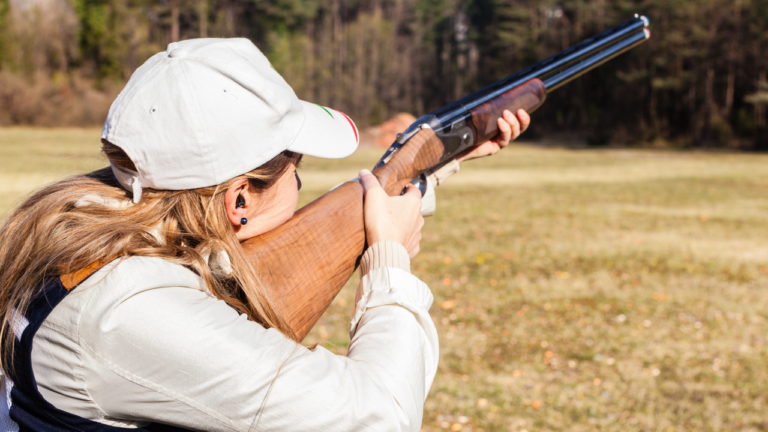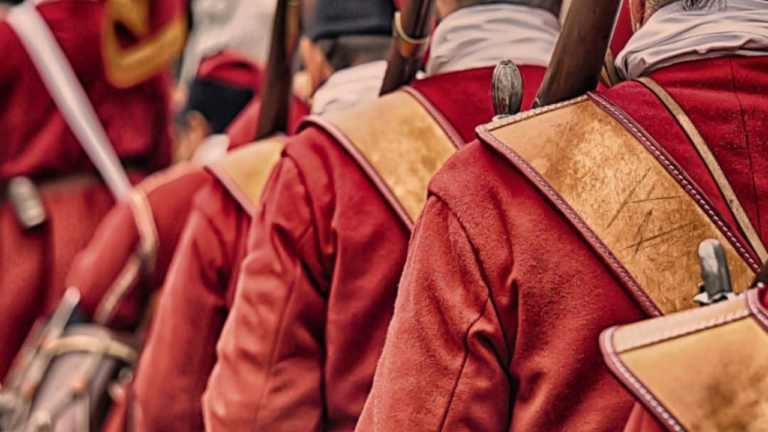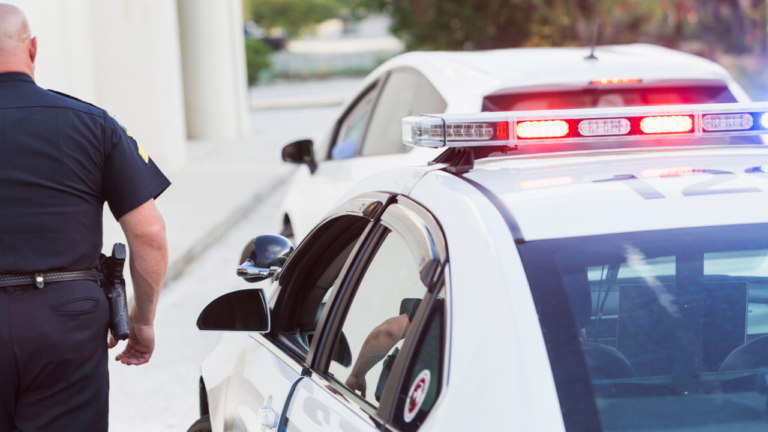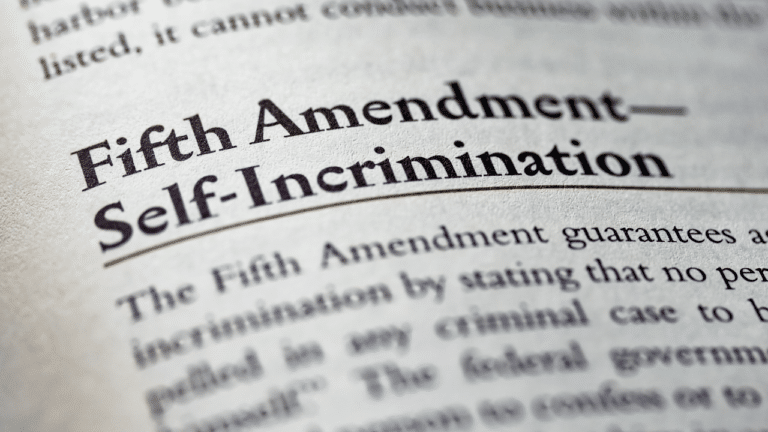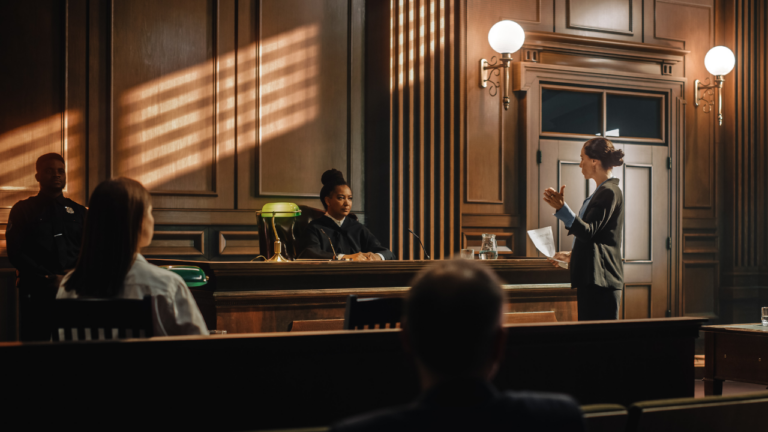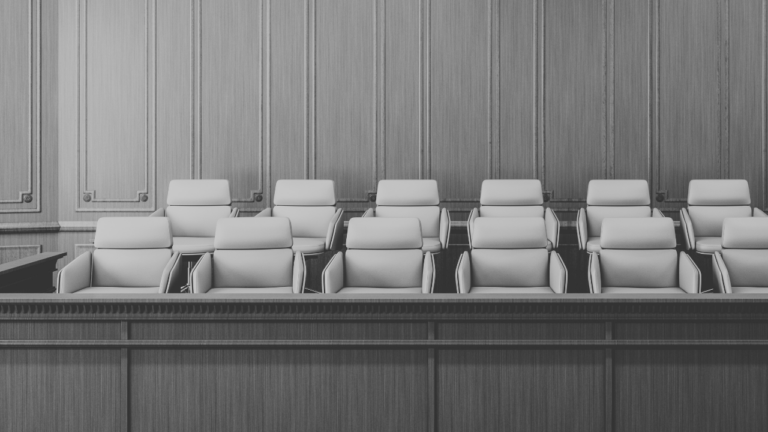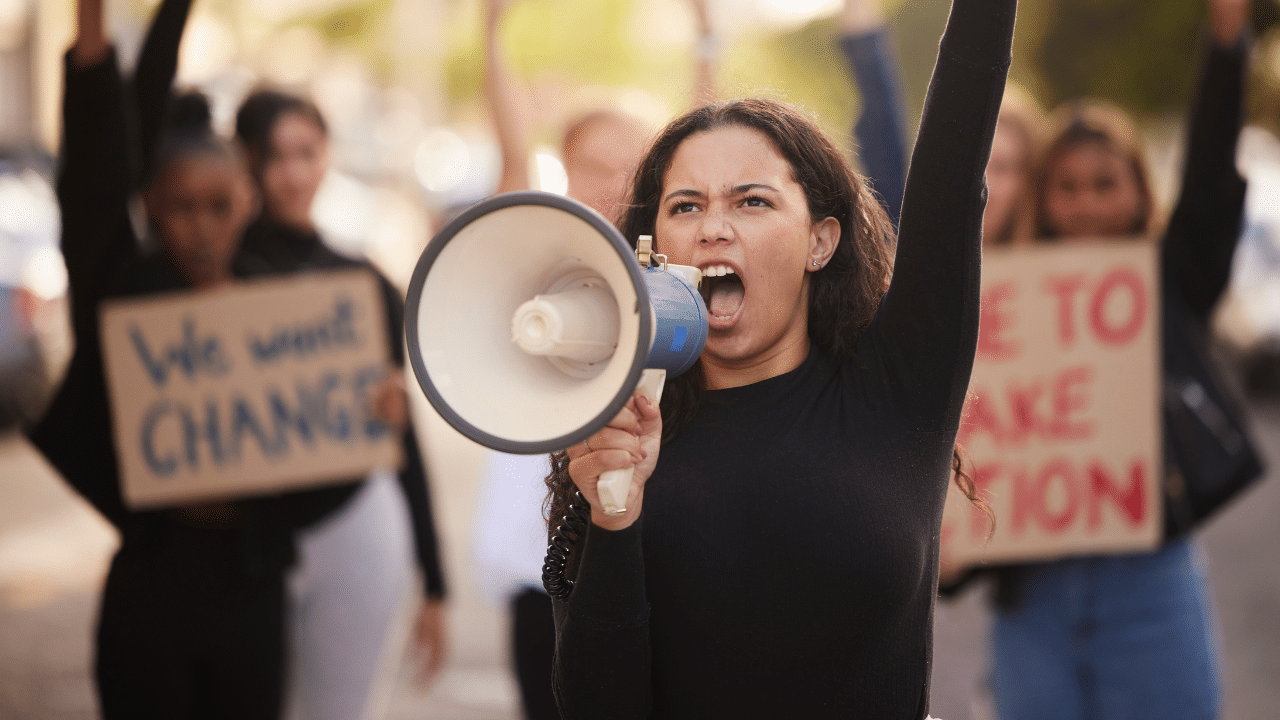
The First Amendment to the Constitution of the United States prohibits the government from enacting laws that infringe upon the establishment of religion, the free exercise of religion, expression, press, assembly, or the right to petition the government for redress of grievances. It is designed and intended to remove governmental restraints from the arena of public discussion, putting the decision as to what views shall be voiced largely into the hands of the public. This is also known as the “marketplace of ideas.”
The First Amendment protection, applied to both the federal and state governments through the Fourteenth Amendment’s Due Process Clause, is a cornerstone of American democracy, but is not absolute. Individuals may express their thoughts and beliefs, worship according to their faith, assemble peacefully, and seek redress from the government. However, compelling government interests may require certain reasonable, content-neutral restrictions on speech, expression, assembly, and religious practices.
WHAT IS THE TEXT OF THE FIRST AMENDMENT TO THE UNITED STATES CONSTITUTION?
U.S. Const. Amend. I. ESTABLISHMENT OF RELIGION; FREE EXERCISE OF RELIGION; FREEDOM OF SPEECH AND THE PRESS; PEACEFUL ASSEMBLY; PETITION FOR REDRESS OF GRIEVANCES.
Congress shall make no law respecting an establishment of religion, or prohibiting the free exercise thereof; or abridging the freedom of speech, or of the press; or the right of the people peaceably to assemble, and to petition the Government for a redress of grievances.
WHAT IS THE HISTORICAL BACKGROUND AND CONTEXT OF THE FIRST AMENDMENT TO THE UNITED STATES CONSTITUTION?
The Framers of the U.S. Constitution, including John Adams, Thomas Jefferson, and James Madison, recognized the importance of protecting individual liberties from government intrusion. Their intention, made clear by the Preamble, was to “form a more perfect Union, establish Justice, insure domestic Tranquility, provide for the common defense, and promote the general Welfare.” In observance of civics and the preamble’s promise, James Madison drafted the first ten constitutional amendments, known as the Bill of Rights, based on the desire to avoid another tyrannical government they had fought so hard against.
The Bill of Rights guarantees fundamental freedoms often restrained by despotic, oppressive governments. It encompasses “the great rights” such as the 6th amendment and 7th amendment right to trial by jury, the first amendment freedom of the press, and the second amendment right to keep and bear arms. They are considered the “choicest privileges of the people” in the United States.
The first ten amendments were proposed to the Legislatures of several States by the First Congress on September 25, 1789. New Jersey was the first State to ratify the Bill of Rights on November 20, 1789, followed by Maryland, North Carolina, South Carolina, New Hampshire, Delaware, Pennsylvania, New York, and Rhode Island in 1790. Vermont and Virginia ratified the Bill of Rights in 1791, resulting in its adoption. The Legislatures of Connecticut, Georgia, and Massachusetts held out on ratification until 1939.
Amendment one is the freedom of speech amendment, the freedom of religion amendment, guarantees free press and association, and protects the right to petition and assemble. The origins were derived from the desire to eliminate restrictions placed by the government upon speaking and writing in earlier times. And in the seventeenth century, an age of rationalism and natural law, the freedom of utterance was an ideal, philosophic truth, thought to have essential value for the progress of civilization. James Madison made the First Congress dive deeper into civics and fundamental freedoms in order to ensure America’s long-term stability.
WHAT IS THE 1ST AMENDMENT FREEDOM OF SPEECH?
The First Amendment to the United States Constitution protects freedom of speech, which means the government has no power to restrict expression because of its message, its ideas, its subject matter, or its content. Free speech is the right to express any opinion in public without censorship or restraint by the government. Freedom of speech may be exercised in a direct way with words, or a symbolic way with actions. The right to express oneself is also recognized as an inherent human right by the United Nations in Article 19 of the Universal Declaration of Human Rights.
As with all fundamental rights, the right to free speech and expression is not absolute. The government may interfere or regulate speech and expression, but must provide substantial justification for attempting to regulate speech for its content. As a general rule, a person may not be criminally punished or held civilly liable for truthful statements about a topic or other person, nor for expressing an honest opinion.
The U.S. Supreme Court has struggled for centuries to determine what exactly constitutes protected speech rights, but has narrowed unprotected speech into a few limited categories.
What speech is protected by the First Amendment?
The First Amendment protects most speech and expression from government regulation. However, free speech rights do not extend to hate speech, true threats of violence or unlawful acts, obscenity, fighting words, defamation, fraud, incitement, and speech integral to criminal conduct. Such well-defined and narrowly limited classes of speech may be prevented or punished without raising any Constitutional problem. See U.S. v. Stevens, 559 U.S. 460 (2010).
Traditionally, false speech fell outside the realm of First Amendment protection, so Congress and state legislatures were permitted to enact laws such as the Stolen Valor Act of 2005. But in 2012, the Supreme Court decided in United States v. Alvarez that criminalizing false claims of military honors was an impermissible content-based infringement on the right to free speech.
What are fighting words?
The U.S. Supreme Court defined “fighting words,” which are not protected by the First Amendment, in Chaplinsky v. New Hampshire. Fighting words are words that, by their very utterance, tend to incite an immediate breach of the peace.
In Cohen v. California, the defendant was convicted of disturbing the peace by wearing a jacket in the corridors of the Los Angeles County courthouse that said “Fuck the Draft.” The Supreme Court held simply displaying a four-letter expletive did not rise to the level of fighting words. In reversing the defendant’s conviction, Justice Harlan wrote, “one man’s vulgarity is another’s lyric.” Such expressive conduct cannot be subjected to government regulation and punishment.
In R.A.V. v. City of St. Paul, Minnesota (1992), several teenagers burned a cross inside a fenced yard of a black family. The teenage defendants were prosecuted under St. Paul’s bias-motivated crime ordinance that prohibited displaying racially charged symbols such as the swastika or burning cross. The U.S. Supreme Court held the law itself constituted viewpoint discrimination because it outlawed actual viewpoints and beliefs. Although the law is aimed at prohibiting conduct, it is written in such a way that it prohibits speech on the very basis of the speech itself. The law is facially unconstitutional under the First Amendment.
What is incitement?
Speech that rises to the level of “incitement” is not protected by the First Amendment, meaning the States may forbid or proscribe such speech. To rise to the level of incitement, the speech must be intentionally directed to inciting or producing imminent lawless action, and likely to incite or produce such action. The mere abstract teaching of the moral propriety or even moral necessity for a resort to force and violence is not the same as preparing a group for violent action, and steering it to such action.
In Brandenburg v. Ohio, during the 1960s civil rights movement, Klu Klux Klan leaders invited the press to a rally. The press filmed the rally and broadcasted it, which led to criminal convictions for the KKK leaders who called for “sending the Jews back to Israel and the Blacks back to Africa.” The U.S. Supreme Court overturned the convictions, because the Ohio law punished mere speech rather than advocacy of imminent illegal action. It did not draw the distinction between mere abstract teaching and causing or inciting imminent lawless action or violence.
What is the difference between political speech and commercial speech?
Political speech, referred to as “the lifeblood of a self-governing people,” is any speech or expression in furtherance of citizens making informed choices among candidates for office, or other interchange of ideas “for the bringing about of political and social changes desired by the people.” McCutcheon v. FEC, 572 U.S. 185 (2014) (Thomas, J., concurring).
Commercial speech is speech that does no more than propose a commercial transaction, or is related solely to economic interests of the speaker and their audience. Commercial speech that is not false or deceptive, and does not concern unlawful activities, may only be restricted to serve a substantial governmental interest, and only through means that directly advance that interest. Truthful advertisements, for example, are protected by the First Amendment. The freeflow of commercial information is indispensable to the American economy.
The U.S. Supreme Court recognizes less protection under the First Amendment for commercial speech than political speech. In Virginia State Board of Pharmacy v. Virginia Citizens Consumer Council, the Court declared the most protection is given to political speech, which is speech intended to increase participation and understanding of our political process, and to promote the “marketplace of ideas,” and the democratic process. Any government restriction on political speech will be reviewed under strict scrutiny, and must be justified by a compelling government interest, and narrowly tailored to serve that interest.
In Central Hudson Gas & Electric Corp. v. Public Service Commission of New York, the Court delineated the intermediate scrutiny appropriate for commercial speech. First, commercial speech that is misleading or about unlawful activity may be prohibited entirely. Commercial speech that falls into neither of those categories may be regulated if: (1) the government asserts a substantial interest in support of its regulation; (2) the government demonstrates the restriction on commercial speech directly and materially advances its interest; and (3) the regulation is narrowly drawn.
What is obscenity?
In Roth v. United States, the U.S. Supreme Court held that “[o]bscene material is material which deals with sex in a manner appealing to prurient interest.” The Court developed a three-part test: (1) whether the average person, applying contemporary community standards, would find that the work, taken as a whole, appeals to the prurient interest; (2) whether the work depicts or describes, in a patently offensive way, sexual conduct specifically defined by the applicable state law; and (3) whether the work, taken as a whole, lacks serious literary, artistic, political, or scientific value. See Ashcroft v. ACLU, 535 U.S. 564 (2002).
What constitutes obscenity is always changing, because it is based on contemporary community standards and the average person’s sensibilities. The Supreme Court has agonizingly attempted to define obscenity for nearly a century, only to conclude it cannot be defined. Justice Stewart famously wrote, “I know it when I see it.” See Jacobellis v. Ohio, 378 U.S. 184 (1964).
State courts likewise struggle to define obscenity. For example, in Varkonyi v. State, an appellate court upheld a defendant’s obscenity conviction for attaching a pornographic video to an email. The video depicted a woman being sexually penetrated by a pony. The court determined the video, which depicted sexual bestiality, appeals to the prurient interest in sex, shows sexual conduct in a patently offensive way, and lacks serious artistic or scientific value.
Is pornography protected by the First Amendment?
The U.S. Supreme Court held in Sable Communications of California v. F.C.C., that “[s]exual expression which is indecent but not obscene is protected by the First Amendment.” This means that not all pornography is considered “obscene.” In United States v. Playboy Entertainment Group, the Supreme Court seemed to accept that most adult pornography, although “highly offensive,” is not obscene. And while the federal government continues to pursue obscenity cases, many state prosecutors have all but abandoned obscenity laws, given how central adult pornography has become to mainstream culture. It must be noted that any child porn is and will always be illegal, and unprotected by the First Amendment.
Is dance a form of expression protected by the First Amendment?
Yes. However, dancing is also considered conduct on which the government may impose reasonable restrictions and regulations.
For example, in Erie, Pennsylvania v. Pap’s A.M., a city ordinance prohibited completely nude dancing. Owners of Kandyland, a nude strip club, sued. Ultimately, the U.S. Supreme Court determined the law requiring exotic dancers to wear pasties and a g-string was constitutional as a reasonable, content-neutral time, place, and manner restriction on expression.
What is “symbolic speech”?
Symbolic speech is conduct that intends to convey a specific message, and there is a likelihood that the message will be understood by the people who viewed it. Symbolic speech enjoys First Amendment protection, but may be regulated under certain circumstances.
In United States v. O’Brien (1968), the defendant burned his draft card on the Boston Courthouse steps in front of a crowd. He was prosecuted under a federal statute prohibiting people from destroying or mutilating their draft cards, but argued the statute was unconstitutional. The U.S. Supreme Court disagreed, holding the statute, on its face, only suppressed conduct instead of speech or expression. Because the law was content-neutral, and advanced the substantial government interest of establishing the Selective Service system, the law was constitutional as applied.
By contrast, in Street v. New York (1969), the defendant was convicted of burning the American flag after receiving news of civil rights leader James Meredith’s assassination. The U.S. Supreme Court held the law under which the defendant was convicted prohibited words as well as conduct, and was thus unconstitutional as a restriction on speech and expression.
Are defamatory statements protected by the First Amendment?
Generally, false, libelous, and defamatory speech do not enjoy free speech rights. A person or entity may be held tortiously liable for defamation, depending on whether the statement targeted a public figure or private individual. Private individuals seeking damages for libelous or defamatory statements must only prove the statements were actually false. Public figures, however, must show the statements were false, and were made with “actual malice.”
For example, in New York Times Co. v. Sullivan, an ad in the New York Times indicated that Sullivan, the Montgomery (Alabama) Police Commissioner, had acted violently towards students participating in a civil rights demonstration. Some of the statements in the advertisement were false. However, because Sullivan was a public official, he needed to show the false statements were published with actual malice.
In Hustler Magazine v. Falwell, Hustler ran a fake advertisement suggesting the nationally-known minister Jerry Falwell’s first sexual experience was a drunken incestuous rendezvous with his mother in an outhouse. The ad contained a disclaimer: “ad parody—not to be taken seriously.” And the table of contents described the ad as fiction. Falwell sued Larry Flynt and the magazine for libel and intentional infliction of emotional distress. The Supreme Court ultimately held Falwell, a public figure, had the burden to prove Hustler ran the publication containing false statements made with actual malice to recover damages.
By contrast, in Philadelphia Newspapers, Inc. v. Hepps, a newspaper and its reporters wrote a series of articles claiming that Hepps, a private individual, had links to organized crime. Hepps sued and lost, and the case ultimately rose to the U.S. Supreme Court to determine the standard to which the newspaper was held, and what Hepps had to prove to win damages. The Court held that the articles were on a matter of public concern, but Hepps, a private individual, did not have to prove actual malice—only that the statements made in the articles were false or made with reckless disregard for the truth.
WHAT IS THE 1ST AMENDMENT FREEDOM OF ESTABLISHMENT AND EXERCISE OF RELIGION?
The First Amendment protection of freedom of religion, also known as the Establishment Clause or free exercise clause, prohibits the government from establishing a national or state religion, or impeding the free exercise of religion. The free exercise clause dictates that the United State is a pluralistic society in which individuals may practice any religion or no religion at all.
What is separation of church and state?
Thomas Jefferson wrote of separation between Church and State in an 1802 letter to the Danbury Baptists, explaining that “religion is a matter which lies solely between Man & his God.” The First Amendment embraces the right to select any religious faith, or none at all, without persecution. America is founded on “equal respect for the conscience of the infidel, the atheist, or the adherent of a non-Christian faith such as Islam or Judaism.” Wallace v. Jaffree, 472 U.S. 38 (1985).
The First Amendment’s Establishment Clause separates the government from religion—in other words, it “safeguards the free exercise of the chosen form of religion.” Cantwell v. Connecticutt, 310 U.S. 296 (1940). On the flipside of the same coin, the state, local, and federal governments are prohibited from requiring its citizens to accept or practice any form of worship.
For example, in Van Orden v. Perry, the Supreme Court held that a 6-foot monument inscribed with the Ten Commandments on Texas State Capitol grounds did not violate the Establishment Clause. The passive nature of the monument, taken into consideration with the Nation’s history, simply amounts to a moral and historical message reflecting cultural heritage, which is permissible under the First Amendment.
In its 1971 decision in Lemon v. Kurtzman, the U.S. Supreme Court formed the Lemon test, holding a law or government practice violates the Establishment Clause if: (1) it has a secular purpose; (2) its principal or primary effect advances or inhibits religion; and (3) it involves excessive entanglement between government and religion. Lemon has since been abrogated, and the Court abandoned this standard, along with its endorsement test offshoot. See American Legion v. American Humanist Assn., 588 U.S. __, 139 S.Ct. 2067 (2019).
In Kennedy v. Bremerton School District, a high school football coach lost his job after he knelt at midfield after games to offer a quiet personal prayer. The coach sued in federal court, alleging that the school district’s actions and policies violated the First Amendment’s Free Speech and Free Exercise Clauses. The U.S. Supreme Court agreed, holding the school district impermissibly suppressed the coach’s religious expression.
Is government regulation of religion permitted under the Establishment Clause?
The Establishment Clause prohibits the government from establishing or endorsing a specific religion, promoting religious activities or beliefs, using taxpayer money to support religious institutions, and mandating religious practices for individuals or organizations. Nor may the government pass laws discriminating against individuals or organizations based on their religious beliefs or lack thereof.
For example, in Church of the Lukumi Bablu Aye, Inc. v. City of Hialeah, a city ordinance prohibiting ritual sacrifices of animals was declared unconstitutional in violation of the free exercise clause, because it specifically targeted Santeria, and a church that practiced humane animal sacrifices as religious rituals. The U.S. Supreme Court reiterated the government may regulate conduct as long as the law is neutral—i.e., does not discriminate against a specific religion, despite incidental restrictions imposed by the law on religious practices. Here, however, the law was intended to discriminate against Santeria.
WHAT IS THE 1ST AMENDMENT FREEDOM OF ASSEMBLY AND PETITION?
The right of assembly is the individual right of people to come together and collectively express, promote, pursue, and defend their shared ideas. It is equally important as the rights of free speech and free press, because the right of peaceable assembly is cognate to those rights. The holding of meetings for peaceable political action cannot be proscribed.
Closely connected to the right to assemble, the right to petition the government for a redress of grievances includes the right to communicate with government officials, lobbying government officials, and petitioning the courts by filing lawsuits with a legal basis. This vital protection guarantees the rights of citizens to voice their concerns, address government actions, and seek remedies for perceived injustices.
What is the origin of the First Amendment freedom of assembly and the right to petition for redress of grievances?
The rights of the people to peaceably assemble and to petition the government for redress of grievances can be traced back to Magna Carta, the Petition of Rights, and the Bill of Rights of 1688. The right to petition finds its roots in the belief that citizens should be active participants in their government. Expressing dissatisfaction, proposing changes, and advocacy of interests is central to a functioning democracy, and empowers the people to hold their elected officials accountable.
The right to assembly originated from American protests and resistance against oppressive regimes, specifically, the abuses endured under British rule.
Can the government restrict freedom of assembly and the right to petition?
Yes, because the right to petition and assembly is not absolute. The state, local, and federal governments may impose reasonable restrictions on the time, place, and manner of petitioning and assembling to ensure public safety and order. Exercising principle fundamental rights must be balanced with public welfare.
Does the First Amendment freedom of assembly apply to public places?
Yes. The U.S. Supreme Court has recognized that “‘[t]ime out of mind’ public streets and sidewalks have been used for public assembly and debate, the hallmarks of a traditional public forum. Frisby v. Schultz, 487 U.S. 474 (1988). And public streets do not lose their status as traditional public fora simply because they run through a residential neighborhood. All public streets are held in the public trust and are property considered traditional public fora.
Government regulations such as anti-picketing ordinances must be narrowly tailored to achieve a compelling state interest. The State may also enforce regulations of the time, place, and manner of expression which are content-neutral, narrowly tailored to serve a significant government interest, and leave open ample alternative channels of communication.
In Frisby v. Schultz, a group of people gathered outside a doctor’s home to protest his act of performing abortions. Some protestors were prosecuted for violating a state statute prohibiting picketing directly in front of a person’s residence, if the protest targeted the particular residence. The U.S. Supreme Court overturned the convictions, holding the law violated the First Amendment freedom of assembly. Streets, sidewalks, and public parks are places where Americans congregate to express their views. In this case, the group quietly paraded, and did not block egress or ingress. While a person’s interest in the sanctity of their home is compelling, this statute overreached.
What is freedom of association?
The freedom of expression and assembly includes the freedom of association, or the right to associate with others in groups that express messages, such as advocacy groups or political parties. Freedom of association plays an important role in creating positive change, supporting citizens with shared beliefs and values, and furthering participation in the democratic process.
The freedom of association also protects the freedom of those groups to exclude people who might interfere with their speech. For example, in Boy Scouts of America v. Dale, an assistant scoutmaster was expelled from BSA after his troop found out he was openly gay. The scoutmaster sued for readmittance and damages, but the Supreme Court declared BSA was not required to allow him to participate. The freedom of association forbids forced inclusion of private groups.
Is a parade protected expression under the First Amendment?
Yes, if the parade conveys a particular message. Parades are public dramas of social relations, and in them performers define who can be a social actor and what subjects and ideas are available for communication and consideration. The marchers in a parade are making some sort of collective point, not just to each other, but to bystanders along the way.
For example, in Hurley v. Irish American Gay, Lesbian, and Bisexual Group of Boston, Inc., the City of Boston stopped sponsoring the St. Patrick’s Day parade in the 1990s, and a private Veterans Council took over. The Council prohibited the Irish American Gay, Lesbian, and Bisexual Group of Boston (“GLIB”) from marching, and GLIB sued. The U.S. Supreme Court held the Council, as a private group conveying a message through a sponsored parade, had a right to choose who marched in the parade. The government cannot compel particular groups to express a message they do not want to convey.
WHAT IS THE 1ST AMENDMENT FREEDOM OF THE PRESS?
Under most circumstances, the government may not censor the press. The U.S. Supreme Court has acknowledged that a major purpose of the First Amendment was to protect the free discussion of governmental affairs. This includes discussions of candidates, structures and forms of government, the manner in which government is operated or should be operated, and all such matters relating to political processes. The Constitution specifically selected the press—newspapers, books, magazines, humble leaflets, and circulars alike—to play an important role in the discussion of public affairs. Mills v. Alabama, 384 U.S. 214 (1943).
The press was designed to serve as a powerful antidote to any abuses of power by governmental officials, and as a constitutionally chosen means for keeping officials elected by the people responsible to all whom they were selected to serve. Suppression of the right of the press to praise or criticize governmental agents and to clamor and contend for or against change muzzles one of the very agencies the Framers of the Constitution thoughtfully and deliberately selected to improve our society and keep it free. Mills v. Alabama, 384 U.S. 214 (1943).
When can the government censor the press?
Any regulation based on a publication’s specific content is almost always an unconstitutional infringement on press freedom. However, The government may restrain reporters, broadcasters, journalists, and the like on a content-neutral basis.
For example, in Federal Communications Commission v. Pacifica Foundation, the U.S. Supreme Court held the First Amendment did not prohibit the FCC from revoking a broadcaster’s license and forum if it served the public interest, convenience, and necessity. A radio station of Pacifica Foundation made an afternoon broadcast repeatedly using “words you couldn’t say on the public airwaves.” In response to complaints about indecent radio broadcasts, the FCC attempted to regulate obscene, indecent, or profane language that is patently offensive over the radio, which is permissible in terms of licensing requirements.
Another noteworthy permissible means of regulation is the government’s ability to tax the media. However, radio and television are subject to greater intrusions than newspapers. Differential taxation of speakers, even members of the press, does not implicate the First Amendment unless the tax is aimed at censoring, or presents the dangers of suppressing, particular ideas. Leathers v. Medlock, 499 U.S. 439 (1991).
What is freedom from prior restraints?
A prior restraint is any scheme which gives public officials the power to deny use of a forum in advance of its actual expression. Prior restraints are generally prohibited, so the government may not place restrictions on speech and press before their utterance or publication.
In New York Times Co. v. United States, the Nixon administration sought to enjoin publication of the Pentagon Papers, classified government documents revealing the Johnson administration lied to Congress and the American people about the United States’ actions in the Vietnam War. The U.S. Supreme Court held the government had not met the “heavy burden of showing justification for the imposition of such a restraint.” Perhaps publishing “sailing dates of transports or the number or location of troops” could be blocked in times of war, but such was not the situation here. Near v. Minnesota, 283 U.S. 697 (1931).
Can the government prohibit fake news?
“[A] nation that is afraid to let its people judge the truth and falsehood in an open market is a nation that is afraid of its people.” –John F. Kennedy (Feb. 26, 1962).
The press has always played a pivotal role in maintaining an informed citizenry and holding those in power accountable. But the rise of fake news, declining public trust in media, and targeted attacks on journalists have become significant challenges to the First Amendment’s protection of press freedom. Congress and state legislatures have enacted “false reporting statutes” to prevent and punish false speech in public channels, but such speech must be truly and immediately inciting in nature—the digital equivalent of yelling “fire” in a crowded theater.
Most Americans get their news from social media websites and apps such as Facebook, Twitter, Tiktok, and other platforms. False reports of emergencies have the potential to lead to mass hysteria, and therefore may be regulated under narrow circumstances. However, courts are reluctant to punish information dissemination.
WHAT ARE CONTEMPORARY CHALLENGES TO THE FIRST AMENDMENT?
The First Amendment protects the fundamental right to freely express thoughts, beliefs, and ideas without government interference. However, the vast and rapidly evolving landscape of modern society has presented new challenges that test the boundaries of the First Amendment freedoms.
Does the First Amendment protect social media posts?
Typically, social media posts are treated as forms of speech and expression, and any censorship thereof will be viewed under the First Amendment microscope. But with the advent of social media and modern digital communication, there is great opportunity for individuals to perpetuate mischief that can result in falsehoods. The fake news epidemic, hyperbole, embellishment, practical jokes, rumors, catfishing, and malicious lies and threats on social media are not uncommon.
States have only recently begun prosecuting harmful social media activity, such as those designed to cause public alarm or inconvenience. Passing constitutional muster will require a showing that the statutes are either content-neutral or punish acts in addition to the communication itself. If the laws punish specific content of speech or expression, the government must show a compelling interest in restricting false reports, and that the laws are narrowly tailored to achieve the compelling interest.
For example, a law prohibiting speech that is incitement is constitutional if the law is directed to inciting or producing imminent lawless action, and is likely to incide or produce such action. Statutes requiring specific intent to cause widespread harm may also be constitutional, given the compelling government interest to protect the public well-being. Thus, social media posts—Twitter, Tiktok, instagram, Facebook, and others—fall within First Amendment protections, but may be regulated under narrow circumstances, generally if the posts are false and intended to cause widespread harm or panic.
Can social media platforms “censor” its users?
Social media companies are private companies, so the extensive First Amendment jurisprudence supports their right to make content decisions as they see fit. However, this did not stop states such as Texas from enacting laws similar to House Bill 20, which prohibits social media platforms from censoring its users. The Texas law will be subject to review by a federal court.
Can schools prohibit students’ speech?
Under certain circumstances, schools and public employers may regulate the speech and conduct of students and employees.
For example, in Bethel School District 403 v. Fraser, a student making a nomination speech for his friend at a mandatory assembly made profane, inappropriate, and sexual comments about his friend. He was punished, and sued the District for violating his freedom of expression. The U.S. Supreme Court held the government has an interest in punishing and preventing profane and indecent language in schools because such speech interferes with the educational mission and operation of schools. Such prohibitions and punishments are not related to any political viewpoint, but rather were for legitimate pedagogical reasons, and schools are typically not public forums dedicated to expression.
But in West Virginia State Board of Education v. Barnette, the West Virginia Board of Education required students to say the pledge of allegiance every morning, and students who refused were kicked out of school until they agreed to say it. The U.S. Supreme Court held the Board was violating the students’ First Amendment right not to speak: “If there is any fixed star in our constitutional constellation, it is that no official, high or petty, can prescribe what shall be orthodox in politics, nationalism, religion, or other matters of opinion or force citizens to confess by word or act their faith therein.”
FIRST AMENDMENT TO THE CONSTITUTION OF THE UNITED STATES OF AMERICA
“To courageous, selfreliant men, with confidence in the power of free and fearless reasoning applied through the processes of popular government, no danger flowing from speech can be deemed clear and present, unless the incidence of the evil apprehended is so imminent that it may befall before there is opportunity for full discussion. If there be time to expose through discussion the falsehood and fallacies, to avert the evil by the processes of education, the remedy to be applied is more speech, not enforced silence.”
—Whitney v. California, 274 U.S. 357 (1927) (Brandeis, J., concurring).
The foundation of being American is the freedom to express ideas, because that is how new discoveries are made. As a cornerstone of American democracy, the First Amendment protects speech, expression, and press to assure unfettered interchange of ideas for the bringing about of political and social changes desired by the people. It reflects a judgment by the American people that the benefits of its restrictions on the Government outweigh the costs. The U.S. Constitution forecloses any attempt to revise that judgment simply on the basis that some speech or expression is “not worth it.” U.S. v. Stevens, 559 U.S. 460 (2010).
FIRST AMENDMENT COURT CASES
The United States Supreme Court has interpreted and applied the First Amendment since its adoption in 1791.
- In Tinker v. Des Moines Independent Community School District, students wore black armbands to school in protest of the Vietnam war. The school district created a policy against wearing the armbands, and suspended students who did so. The students sought injunctive relief and nominal damages in federal court. Ultimately, the U.S. Supreme Court held the school district’s prohibition of the armbands was a violation of the students’ First Amendment freedom of expression. The students were expressing their political beliefs in a peaceful, symbolic, and non-disruptive manner. The policy prohibited “pure speech.”
- In Texas v. Johnson and United States v. Eichman, the Court struck down laws against flag burning and flag desecration as unconstitutional under the First Amendment protection. In both cases, the defendants were punished for burning American flags at demonstrations. In Texas v. Johnson, Justice Brennan wrote, “if there is a bedrock principle underlying the First Amendment, it is that the government may not prohibit the expression of an idea simply because society finds the idea offensive or disagreeable.”
- In Pruneyard Shopping Center v. Robins, the Court reiterated that the First Amendment only prohibits the federal government, and states and local governments from limiting free speech, religion, and expression. However, the Court clarified that private property owners may not exclude petition-gathering and political speech if their property is equivalent to a traditional public forum. In Robins, Zionists set up a table to hand out pamphlets in PruneYard’s central courtyard, and the Supreme Court ultimately held the business owners could not wholly prohibit peaceful assembly in the common area.
- In Snyder v. Phelps, members of the Westboro Baptist Church picketed over 600 funerals of American soldiers while carrying signs reflecting their views that the United States is overly tolerant of sin, and that God kills American soldiers as punishment. Their signs stated, among other things: “God Hates the USA/Thank God for 9/11,” “America is Doomed,” “Don’t Pray for the USA,” “Thank God for IEDs,” “Thank God for Dead Soldiers,” “Pope in Hell,” “Priests Rape Boys,” “God Hates Fags,” and “God Hates You.”
The Supreme Court held that, although the church’s messages “may fall short of refined social or political commentary, the issues they highlight . . . are matters of public import.” The church’s speech is therefore protected by the First Amendment, but is subject to “reasonable time, place, or manner restrictions.” Here, the parishioners stayed several hundred feet away from the funeral procession, and none of the attendees were a captive audience to the picketing.
- In Engel v. Vitale, the board of a New York public school system directed a school district’s principal to have each class say a prayer out loud every morning. The U.S. Supreme Court held this was a violation of the Establishment Clause because the school district, acting as a government entity in its official capacity, promoted Christianity.
- In Town of Greece v. Galloway, town residents brought a civil rights action against the Town of Greece, New York, alleging the town’s practice of opening board meetings with a prayer violated the Establishment Clause. The U.S. Supreme Court disagreed, and held opening a town meeting with a prayer in this circumstance did not violate the First Amendment. Generally, a challenge based solely on the content of a prayer will not likely establish a constitutional violation—the town invoked universal themes in addition to Christianity, and called for a “spirit of cooperation” among town leaders.
- In Holder v. Humanitarian Law Project, the Humanitarian Law Project (“HLP”), a non-profit organization working to protect human rights, sought to provide support for the PKK and LTTE, which were designated foreign terrorist organizations by the U.S. Secretary of State. A federal law prohibited providing support for terrorist organizations, and HLP claimed the law banned political speech. The U.S. Supreme Court upheld the law as constitutional, because the Government’s interest in combating terrorism is an urgent objective of the highest order. Here, banning speech was permissible under the strict scrutiny test.


